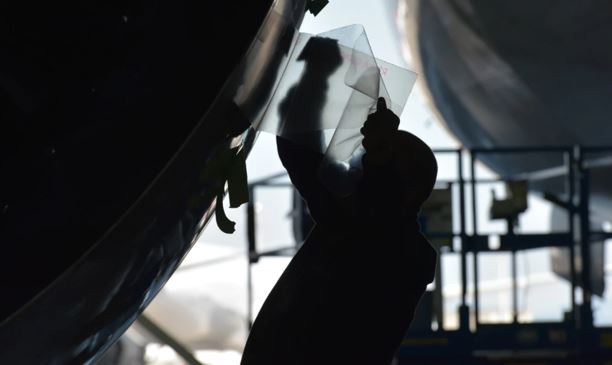Why Choose PEEK Film as the Material in Aerospace?
The aerospace sector is constantly inovating and creating revolutionizing materials that will help improve performance, efficiency, and durability. One of the best material choices due to its performance and other attributes, is polyether ether ketone (PEEK) film, as it provides the high levels of performance characteristics necessary for aerospace applications. Weight savings, resistance to different chemistries, thermal stability, and mechanical strength are just some of PEEK films advantages which traditional polymers and metals are not able to provide. PEEK film has the ability to be used in many different aerospace systems, structural components, thermal insulation, or in any applications dealing with high heat zones – which provides a great advantage of its use in the design of modern-day aircraft or spacecraft. This article outlines why PEEK film is a preferred material in aerospace engineering, as well as its manufacturing characteristics, applications and unique properties for the aerospace industry.
1. Exceptional Thermal Stability
PEEK film, with not only its strong high-temperature resistance but also low thermal conductivity, can be an excellent thermal insulation component of an aerospace system. Not only does it withstand high-temperature environments, but it helps to protect neighboring components from heat damage. PEEK film also exhibits excellent thermal stability, maintaining its dimensionality under thermal stress, with no deformity or material fatigue over time. The consistency of its performance remains effective even after many cycles of heating and cooling, just what aerospace parts go through with extreme temperature fluctuations in shortened time spans. These characteristics give PEEK film strength as insulation wraps, and heat shields, or valuable engine components.
2. Higher Mechanical Strength and Durability
PEEK film can exhibit excellent mechanical properties, with high tensile strength and good fatigue resistance. These mechanical properties make PEEK film suitable to handle mechanical loads during flight (like loads from mechanical stresses, vibrations and pressure variation). Its durability also means better longevity and less maintenance – two of the most important factors in aerospace.
3. Excellent Chemical Resistance
The high chemical resistance of PEEK film allows it to be scientifically unchanged from chemicals, it maintains the integrity of its structure and performance for many years. This is important for components in fuel systems and hydraulic lines or any other components likely to come into contact with chemicals.
4. Lightweight for Better Fuel Efficiency
Weight savings is a never-ending endeavor in aerospace engineering to increase fuel efficiency and maximize payload capability. PEEK film has significantly less weight than traditional materials such as metals, and offers a high strength-to-weight ratio. By substituting the aircraft material with PEEK film that has a higher weight, the aircraft can save meaningful weight to increase fuel economy and reduce mission emissions.
5. Good Wear Resistance and Low Friction
Components of aerospace systems tend to be in motion continuously or with friction that eventually causes wear. PEEK film has low coefficients of friction, and high wear resistance to be utilized in applications such as bearings, bushings, and seals. If that is not great enough, PEEK film has self-lubricating properties so it can work as intended with the least amount of maintenance during operation, while providing the longest lifespan of any parts.
6. Flame and Smoke Resistant
Safety is a very high priority for applications in the aerospace industry, and fire safety requirements are extremely stringent. PEEK film is naturally flame resistant and provides low smoke and low toxicity gas. It meets all FAA and aerospace safety requirements to protect passengers and crew, in the event of fire.
7. Electric Insulation Characteristics
Modern aircraft depend on electronic systems, and the environment requires materials to have good electrical insulation characteristics. PEEK film has good dielectric strength and provides electrical insulation over a wide range of temperatures. This is suitable for electrical applications such as cable insulation, electronic component housings and connectors.
8. Dimensional Stability and Accuracy
Precision is key to aerospace components, and materials must maintain dimensions over various environmental conditions. PEEK film has excellent dimensional stability so it resists distortion under mechanical stress and heat. The dimensional stability of aerospace components is crucial to perform as designed the right way, every time.
9. Versatility for Manufacturing
Along with excellent performance properties, PEEK film can be fabricated in to a part using a variety of manufacturing technologies, including thermoforming, machining and 3D printing. The versatility allows complex geometries and customized components and meets the exact needs of the aerospace application.
10. PEEK Film Use in Aerospace
The unique properties of PEEK film have provided versatility in uses for a number of applications in aerospace, including:
- Structural Components: PEEK film has been used in many structural components of an aircraft, such as interior panels, seat frames, and brackets. These components can benefit from PEEK properties and allow for strength without the bulk and add-on weight of aluminum or steel in structural applications.
- Engine Parts: PEEK film is valuable for many part applications, including compressor seals, fuel system parts, and thermal insulators. PEEK can withstand extreme conditions including high temperature and chemical exposure.
- Electrical Applications: PEEK film is one of many polymer systems used in cable insulation layers, connectors, and sensor housings for electrical systems to function safely and reliably under extreme environments.
- Bearings and Bushings: PEEK film has many applications in the realm of bearings and bushings, such as landing gear bushings, thrust washers, and valve seats, where the inherent low friction properties of PEEK provide added benefit for parts that will see long duty cycles with reductions in required maintenance.
- Spacecraft Component*: PEEK film is used in many spacecraft related components from thermal insulation parts, to structural supports to lightweight fasteners. Components are expected to function in the vacuum of space under extreme temperature swings and variations.
Conclusion
In the realm of aerospace engineering, PEEK film shines as the best material choice for the high thermal stability, mechanical strength, chemical resistance, lightweight construction, and compatibility with stringent safety guidelines it provides. PEEK film’s versatility and incredible stability will be an irreplaceable ally in the design and manufacture of aerospace components. With advancements in aerospace design and manufacture, PEEK film will undoubtedly see unrestrained adoption, resulting in safer, lighter, and more reliable aircraft.







